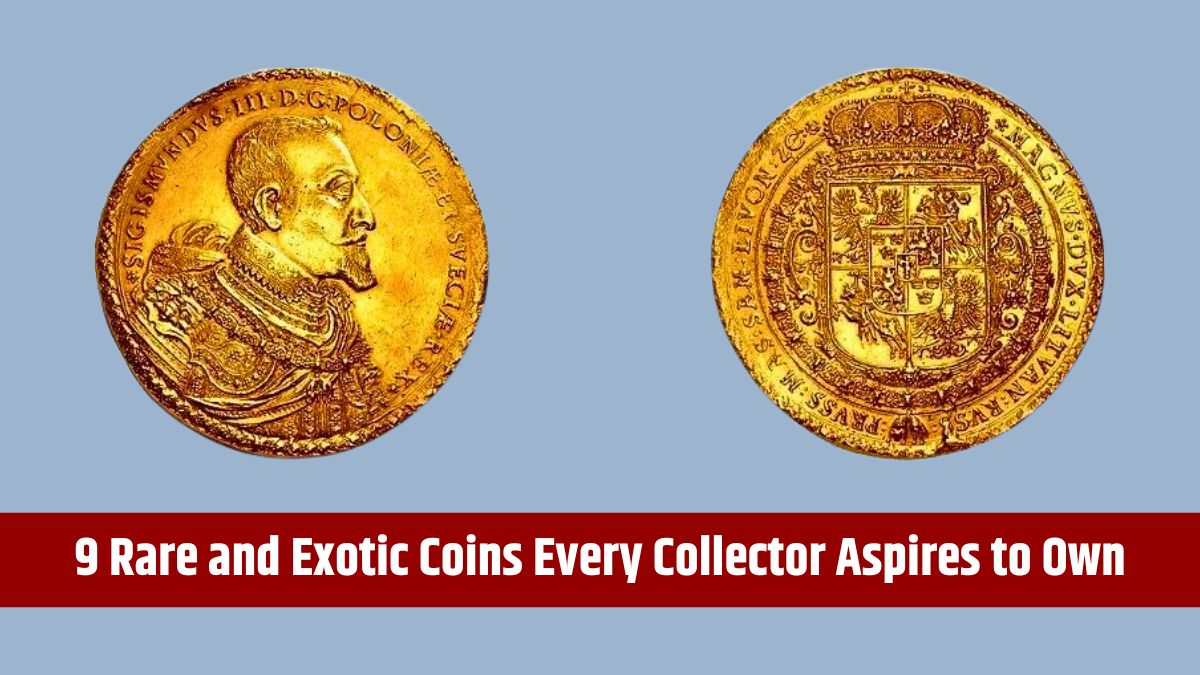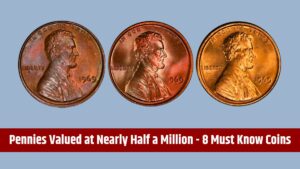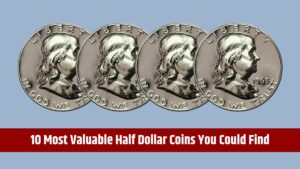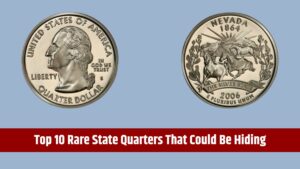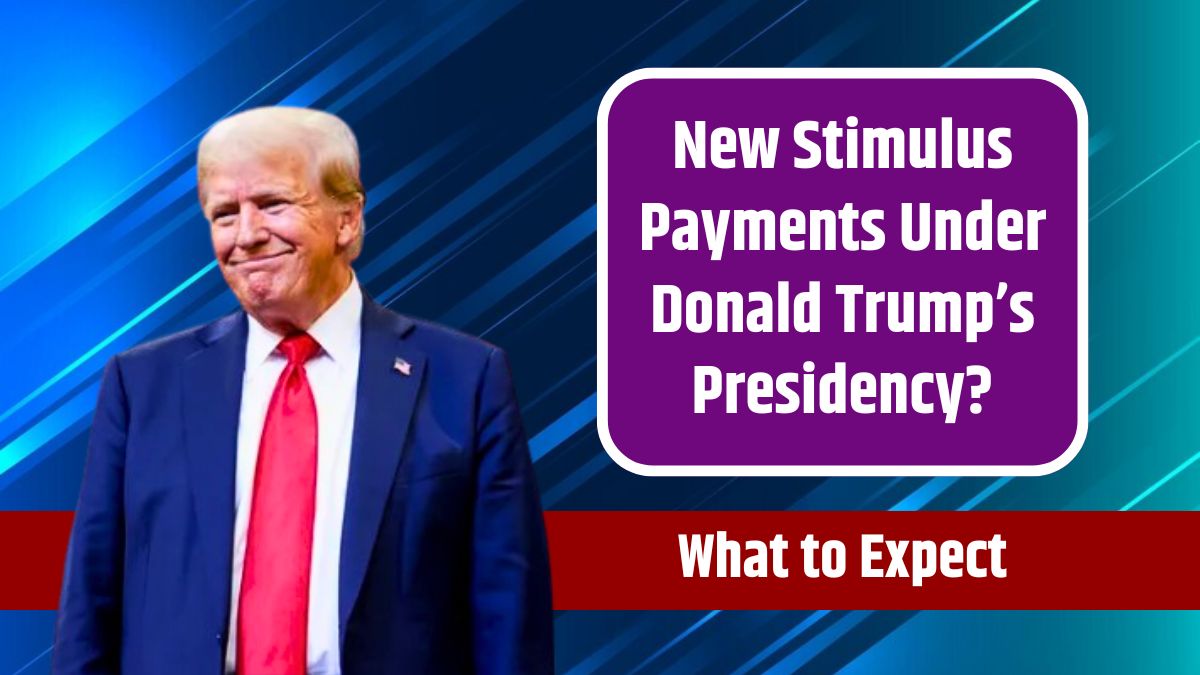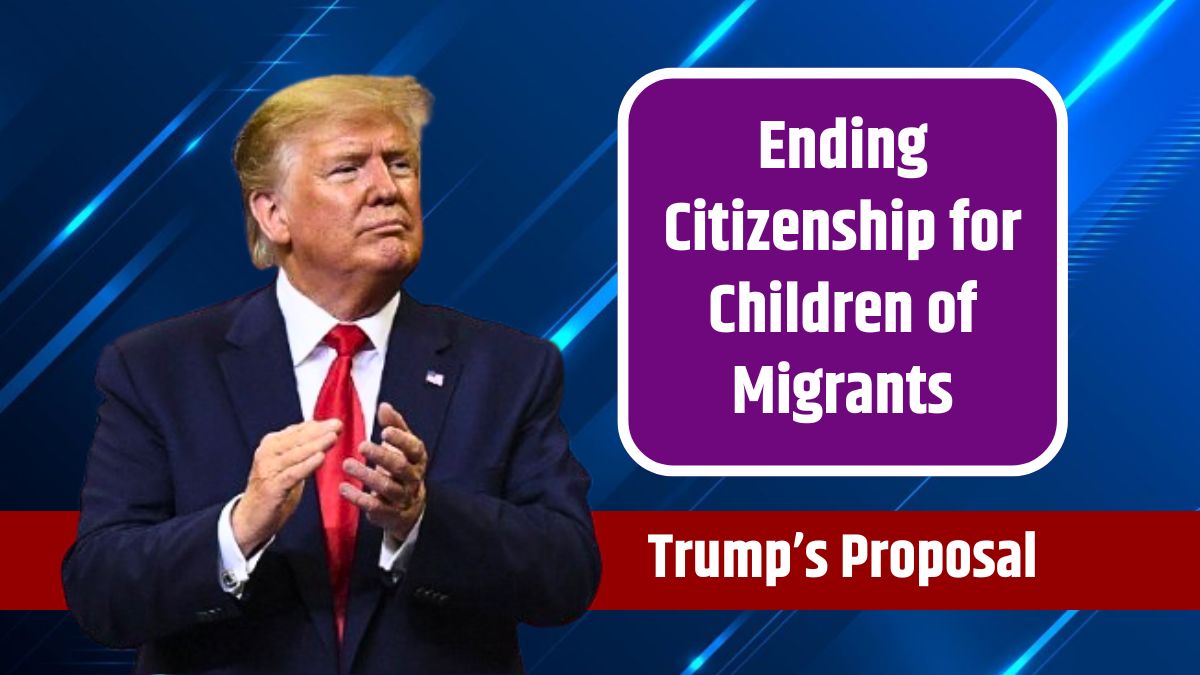The world of numismatics is filled with treasures that collectors dream of owning. These coins stand out for their extraordinary rarity, historical significance, and breathtaking designs. Below are nine of the most exotic and sought-after coins, each representing a piece of history and artistry.
1933 Saint-Gaudens Double Eagle
Estimated Value: $10-20 million
Why It’s Exotic:
This legendary gold coin, designed by Augustus Saint-Gaudens, features Lady Liberty striding confidently forward. Nearly all were melted down due to the Gold Reserve Act of 1934, but a few survived, leading to years of legal battles over their ownership.
Why Collectors Love It: Its rarity, legal intrigue, and artistic brilliance make it one of the most desirable coins in U.S. history.
1794 Flowing Hair Silver Dollar
Estimated Value: $10-12 million
Why It’s Exotic:
Believed to be the first silver dollar struck by the U.S. Mint, this coin represents the dawn of American currency. Lady Liberty’s flowing hair on the obverse and an eagle on the reverse symbolize the country’s ideals.
Why Collectors Love It: Its historical importance and status as a national treasure make it a cornerstone of American numismatics.
1907 Ultra High Relief Double Eagle
Estimated Value: $3-5 million
Why It’s Exotic:
A masterpiece by Augustus Saint-Gaudens, this coin’s intricate high-relief design posed such challenges that it was quickly altered. Only a handful of these original versions exist.
Why Collectors Love It: It is regarded as one of the most stunning examples of coin artistry.
1913 Liberty Head Nickel
Estimated Value: $4-5 million
Why It’s Exotic:
Only five of these nickels exist, likely struck unofficially after the design was discontinued. The mystery surrounding their creation adds to their allure.
Why Collectors Love It: Its rarity and intriguing backstory make it a centerpiece in elite collections.
Edward III Florin (Double Leopard)
Estimated Value: $6-7 million
Why It’s Exotic:
Minted in 1343, this gold coin features King Edward III on a throne with two leopards. Only three examples are known today.
Why Collectors Love It: As one of the rarest medieval coins, it captures the grandeur of England’s history.
1804 Draped Bust Silver Dollar (Class I)
Estimated Value: $4-5 million
Why It’s Exotic:
Known as “The King of American Coins,” this dollar wasn’t struck in 1804 but in the 1830s as diplomatic gifts. Its beauty and rarity have earned it legendary status.
Why Collectors Love It: It embodies early American artistry and diplomacy.
Brasher Doubloon (1787)
Estimated Value: $7-9 million
Why It’s Exotic:
Struck by goldsmith Ephraim Brasher, this coin features an eagle with a shield and Brasher’s initials. It’s one of the first gold coins made in the U.S.
Why Collectors Love It: Its historical importance and scarcity make it a crown jewel in American numismatics.
1808 Capped Bust Quarter Eagle
Estimated Value: $2-3 million
Why It’s Exotic:
This gold coin had a mintage of just 2,710 pieces. Its design includes Lady Liberty in a cap and an eagle on the reverse.
Why Collectors Love It: Its low mintage and survival rate make it an extraordinary rarity.
100 Ducats of Sigismund III Vasa (Poland, 1621)
Estimated Value: $2-3 million
Why It’s Exotic:
This massive gold coin features an intricate portrait of King Sigismund III Vasa and the Polish coat of arms. It’s celebrated for its size and craftsmanship.
Why Collectors Love It: It’s a stunning representation of Poland’s golden age and a marvel of minting technology.
Each coin tells a unique story of its era, from the birth of a nation to technological achievements in minting. They are coveted not only for their monetary value but also for their historical significance and artistic excellence. Owning one of these coins is like holding a piece of history in your hands.
FAQs
Why is the 1933 Double Eagle so valuable?
Its rarity, legal battles, and stunning design make it highly prized.
What makes the 1794 Flowing Hair Silver Dollar special?
It is believed to be the first silver dollar minted by the U.S.
How rare is the 1913 Liberty Head Nickel?
Only five examples are known, making it one of the rarest U.S. coins.
What is unique about the Brasher Doubloon?
It was one of the first gold coins produced in the U.S., marked by its creator Ephraim Brasher.
Why is the Edward III Florin called the Double Leopard?
The coin features two leopards flanking King Edward III on a throne.

